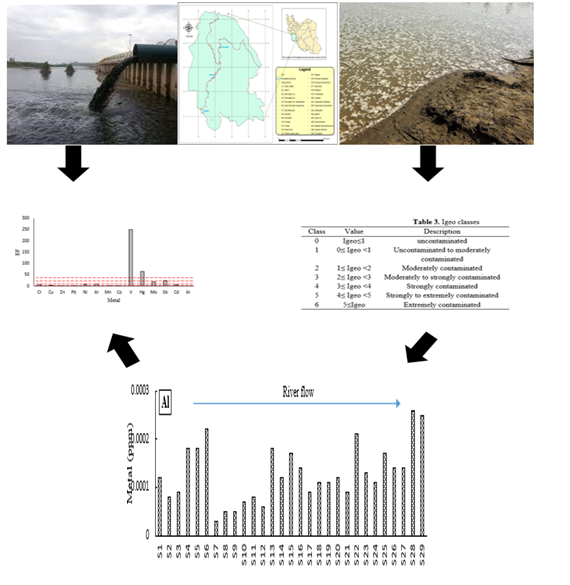
The Karun River, the longest and highest water flow river in Iran, has experienced heavy and trace metal pollution in recent years. While previous studies have evaluated the water quality of the river, not all sections from north to south have been examined for all metals. To address this gap, a study was conducted between March and June 2022 to evaluate the concentration of 15 heavy and rare metals in the river. Geoaccumulation index (Igeo), Potential Ecological Risk (RI), Enrichment Factor (EF), and the Contamination Factor (CF) were used to assess water quality. The results showed that despite some metals exceeding the Iranian standard, all metals had negative Igeo values, indicating an uncontaminated condition. The contamination levels of all metals were low, with a CF value less than one, and RI values were generally below 0.01, except for vanadium and mercury. The Karun River was categorized as moderate and significant enrichment for all metals except for aluminum, lead, and cobalt, with chromium and copper having particularly high EF values at some stations. Zinc, manganese, nickel, arsenic, molybdenum, and cadmium were also in the moderate enrichment category, while antimony, vanadium, and mercury were in the very high and extremely high enrichment categories, respectively. The study concludes that the concentrations of metals in the Karun River are within permissible limits, indicating low risk of metal pollution. However, continuous monitoring is necessary to maintain the permissible limits and identify potential sources of metal pollution in the future to prevent contamination of these essential water resources.
Total file downloads: 15